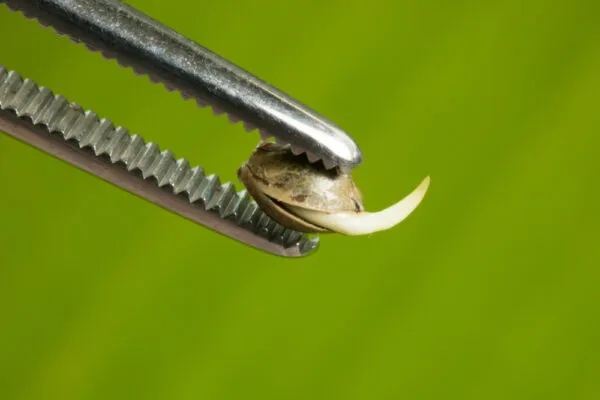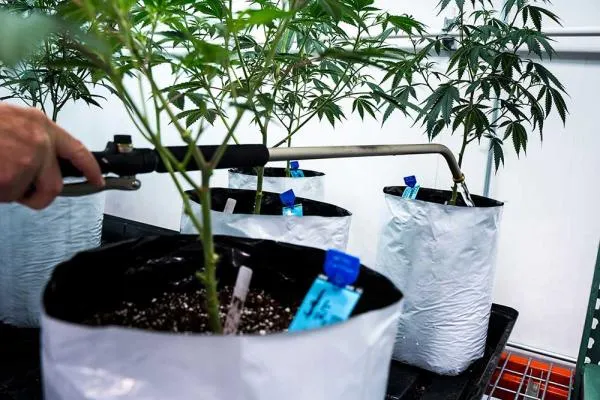We’ve recently discussed the marijuana seedling stage and covered the importance of caring for your plants in their infancy stage, which is absolutely crucial if you want to have a healthy, thriving garden. Logically, proper germination is just as important as caring for seedlings as it is the initial step in the cannabis life cycle. If you’re starting with bad seeds or neglect the germination process, you won’t have any cannabis seedlings to work with. This is not to say that germinating marijuana seeds is rocket science, but you will certainly increase your chances of producing a successful and satisfying harvest with a little tender loving care. Good seed genetics are of utmost importance, but there are some other factors to consider if you want to pop some beans and turn them into a proper garden. Let’s take a look at the basics below.
- What does a cannabis seed need to germinate?
- How long does it take a cannabis seed to germinate?
- Starting with good quality cannabis seeds
- How long does it take for a marijuana seed to become a seedling?
- What are the different methods of marijuana germination?
- What is the fastest way to germinate seeds?
- When can you start feeding cannabis seeds?
- What lighting do marijuana seeds need?
- Summary
What does a cannabis seed need to germinate?
In contrast to adult marijuana plants, which have considerably more demands (such as nutrients) at that particular stage of life, seeds need only three things to enter the germination phase, specifically the correct amount of water (moisture), oxygen and the right amount of heat.
Seeds can be stored for an incredibly long time provided they are kept in a cool, dry place, however once the right amount of moisture and heat are achieved in the environment, which is when the miracle of birth begins.
- Water – Seeds need some moisture to trigger the germination process. Depending on the germination process you choose, moisture will make its way through the cracks and crevices of the seed casing and let the seed know that the snow has thawed, and spring is just around the corner.
- Oxygen – Seeds found naturally in the great outdoors will already be planted in place and will remain there until harvest, which means the soil must be porous enough to provide seeds with much needed oxygen. Without any oxygen or with too much moisture, seeds don’t have much of a chance to sprout.
- Temperature – Warmth is the third signal that lets the seed know the ground has thawed and that things will be getting warmer going into the next few weeks. Cannabis seeds like to germinate when things get warm, at a range of about 70-80° F (21-26° C), though they can still sprout slightly beyond that range. If the temperature drops however, the germination process is slowed down considerably, and seeds become vulnerable to fungal or bacterial attacks.
How long does it take a cannabis seed to germinate?
Once the three requirements mentioned above are met, cannabis seeds will slowly start the germination process. The duration, however, may vary as germination time depends on the seed’s age, health and the temperature of whatever medium it is in. Improperly stored seeds, particularly if more than a couple of years old, may not germinate as well as fresher ones.
With the right conditions though, taproots will start to appear in as little as 12 hours, though to fully germinate seeds can take 3 to 10 days. If the temperature is too low or the seeds aren’t of the best quality, this can take even longer, which puts seeds at risk of fungal or bacterial attack and by extension will affect the overall quality of the plant.
Starting with good quality cannabis seeds

For most growers this seems like a no-brainer, however even more experienced growers sometimes forget to check seed quality under the assumption that they purchased them from a trusted source that always does quality control. So how can you tell your seeds are good quality?
Start first with an eye test. Good seeds should be mature and uncracked. Usually, they come in shades of dark brown or tan. White or pale green seeds are a sign that the seed is immature and will most likely not germinate. In terms of size, seeds can vary quite considerably from strain to strain though strains will generally produce similar looking seeds. Look for seeds that are more or less symmetrical and avoid oddly-shaped or deformed ones.
You can also test the quality of the seed by its firmness. Using your thumb and a finger, gently squeeze the seed and if it passes the stress test it should be good to go. Provided you aren’t an experienced cannabis breeder yourself, the best way to source quality seeds is to buy from a reputable seed bank or breeder.
How long does it take for a marijuana seed to become a seedling?
Once the seeds have been placed in a moist environment and have cracked, i.e. the taproot has started to appear, the stem quickly appears and emerges above the soil line. Rolled up inside the seed shell at the end of the stem are two embryonic leaves (cotyledons) that unfold once the seed casing has fallen off. These leaves do not resemble the traditional serrated leaf shape associated with marijuana, instead they supply the plant with nutrients for growth until the more recognizable ‘true leaves’ appear, and the plant starts photosynthesizing its own food. This can take anywhere from 3 to 10 days before it becomes a seedling.
What are the different methods of marijuana germination?
As discussed above, seeds need water, warmth and oxygen to germinate. There are however a few different ways of combining all three in order to get your seeds to sprout, each with their own advantages and disadvantages. Let’s have a look at the most popular methods of popping beans.
Glass of water method
This is perhaps the easiest and most widely known method of germinating cannabis seeds, though it is perhaps much less effective than most people think. All you need for this is a glass or bowl of room-temperature water filled half way. Just place your seeds into the glass and wait about 3 to 5 days. At that point tiny little taproots should start to appear. While you are waiting for the seeds to crack, prepare some soil pots and make some small holes (about 1 cm deep) where the seeds will be transplanted. Once taproots have become visible and have reached a length of a few centimetres, very carefully place the seeds into the soil pots where they will begin to take root. The problem with this method is that too much moisture (and a lack of oxygen) can keep the seed from germinating. Once the seeds have been planted in soil, equally make sure that they are moist but not overwatered as this could be an invitation for a fungal attack.
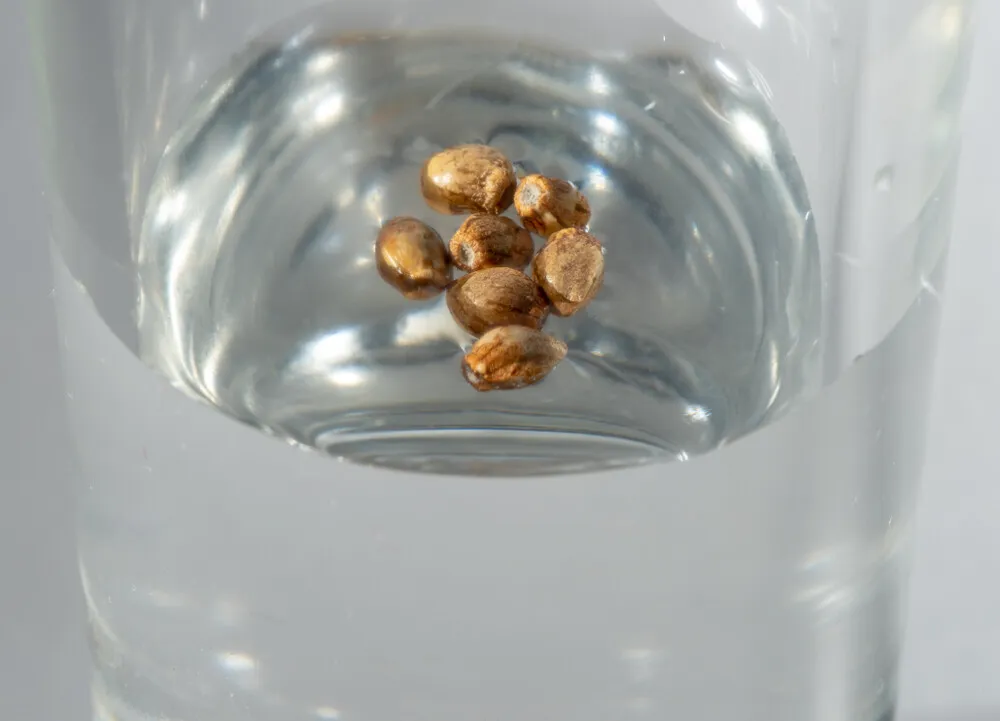
Wet paper towel method
This is also a very popular and easy method of seed germination that is ideal for first time growers. Similar to the glass of water method, you will need either a bowl or a plate, though not nearly as much water. Place your seeds between two damp sheets of wet paper towel or a cloth (alternatively you can use cotton balls instead) then cover with another plate or piece of plastic wrap. Make sure that the towels aren’t too wet to avoid any potential disease. If this is a concern, you can always treat the water with 0.5% hydrogen peroxide or use diluted compost tea, which will fight potential pathogens and stimulate root development. Once taproots are visible, you can plant them into the target medium like in the glass of water method.
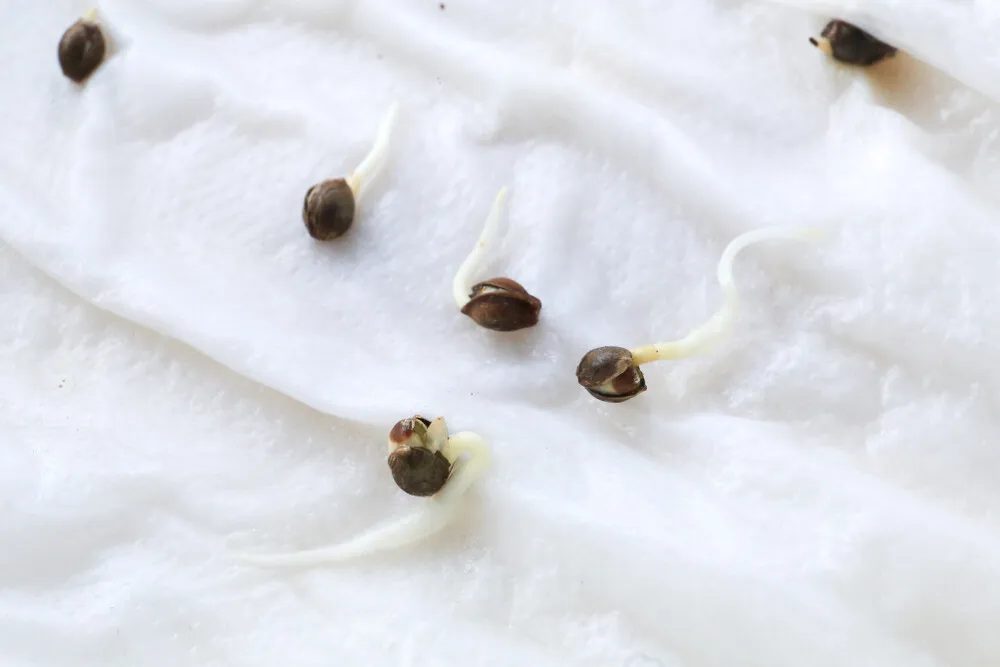
Direct to soil method
Perhaps the easiest and most traditional of germination methods, planting directly in place can save you a few steps in the process, particularly having to handle delicate freshly germinated seeds, however you will not know as quickly whether seeds have sprouted. By putting seeds directly into soil, you are providing them with heat and moisture, though not too much. Make a hole of about 1 cm deep in the soil and plant your seed. You can water your soil in advance to keep it moist or you can lightly spray the area after having planted the seed. In about 3 to 10 days roots should appear and the stem should pop out of the soil line. You can either transfer the seedling to a bigger pot or leave it in place if you are using a larger pot for the rest of your grow.
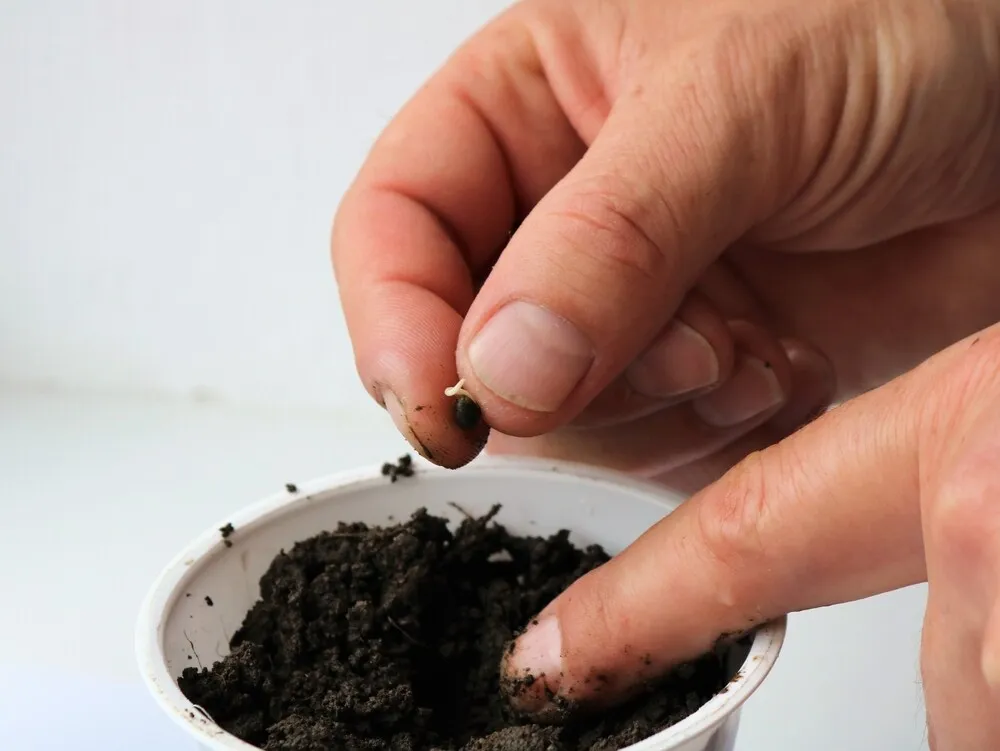
Rockwool cubes
Rockwool cubes are a good choice if you are planting seeds in larger quantities or if you still haven’t decided whether you want to grow in soil or hydroponically. They are a great method for creating a microclimate that will supply moisture, warmth and oxygen. Like the direct to soil method, rockwool cubes remove the need for taking rooted plants out of their medium. Do a pre-soak on your rockwool cubes before placing them on a plastic tray, ideally with a plastic dome. If disease or fungal attacks are a concern, you can also apply a 0.5% hydrogen peroxide solution to prevent attacks. Once your rockwool cubes have been soaked, plant the seeds directly inside (about 1 cm deep), put the cubes in a tray and close the lid/dome. With the right temperature, seeds should germinate quickly, usually between 24-72 hours. Once seeds have germinated and have started developing roots (about 2 weeks), the rockwool cubes can be placed in a new grow medium, such as soil, or a specific container for hydroponic growing.
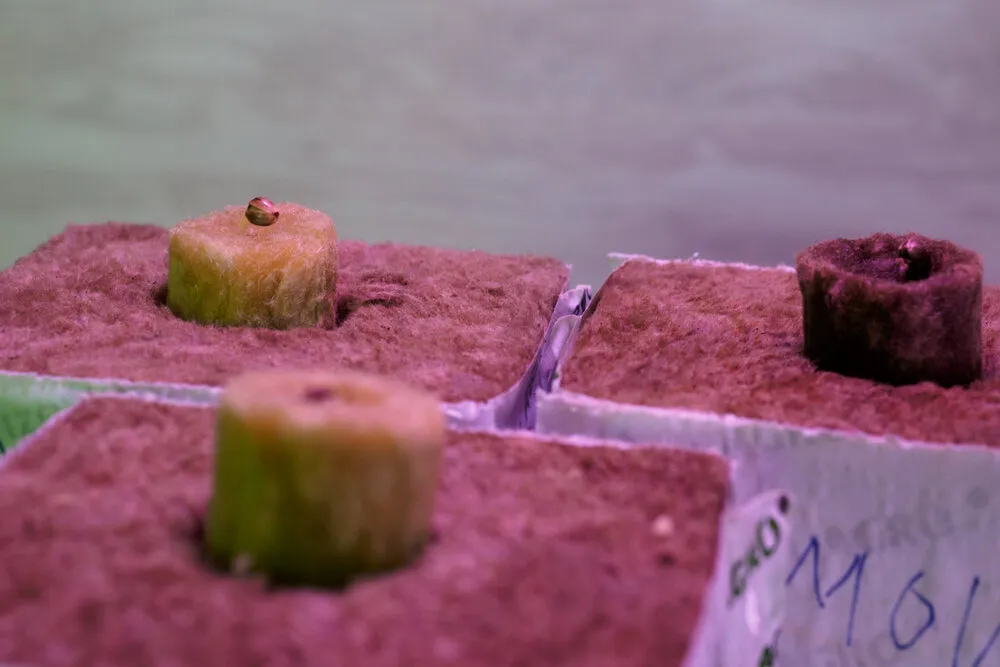
Starter plugs
Much like rockwool cubes, starter plugs, or jiffy pellets are a very handy tool for germinating marijuana seeds as they make planting sprouted seeds all the easier by avoiding transplant shock. Starter plugs are usually made of a pH-neutral peat and/or coco coir substrate and occasionally have added micronutrients or biologicals that will help roots quickly develop, avoid nutrient lockout issues and fight off potential pathogens. Place your plugs in a shallow container such as a propagation tray and moisten them by spraying them or pouring a small amount of water onto them. The water will make them bulk up in size enough to provide a shelter for the seed and the consistency of the substrate will allow for enough aeration. Once the plugs have bulked up, place the seed inside and cover the tray with a dome or plastic cover.
What is the fastest way to germinate seeds?
The fastest NATURAL way of speeding up the germination process is to provide the ideal amount of warmth, moisture and oxygen to your seeds, preferably once they are in their final place of residence. Even under perfect conditions this can take at least a few days. However, if you are really short on time for whatever reason, it is possible to use a process known as scarification. This involves weakening or physically opening the seed to make it more permeable to water and gases, thus speeding up the natural process of germination.
This can be done mechanically (by very gently grinding the casing with sandpaper for example), thermally (through warmer temperatures), or chemically (using household chemicals). By breaking down their casing, seeds will be more quickly ‘awakened’ by the moisture and will have a higher overall germination rate. Physical scarification is perhaps the safest of methods provided you are very gentle with the seed and know what you are doing. Scarification is not advised for inexperienced growers.
When can you start feeding cannabis seeds?
Because of the nutrients already contained in cannabis seeds, they will have enough energy to survive the germination and seedling stage, which usually lasts about 2 to 3 weeks, meaning you won’t have to feed them anything until the first set of true leaves appear. Even then, however, you still may not need to add any nutrients depending on the medium your plants are in. If using a well-balanced soil, you can stretch this out even a little further, though in hydroponic systems you may have to start sooner. At such an early stage, it is recommended to use 1/4th of your normal feeding amount. Remember, when it comes to nutrients, particularly in soil, less is more.
What lighting do marijuana seeds need?
Since seedlings are so delicate, yet still have enough energy stored in them to last them a couple of weeks on their own, it is not recommended to use high-intensity lights as they could be too much for seedlings to handle. Most indoor growers opt for fluorescent tubes (T-8/T-5) or CFL bulbs as they provide plenty of light without much heat. Keep the lights around 6” (15 cm) above the seedling canopy and adjust as needed. If growing outdoors, it is best to plant them immediately after germination as they quickly adjust to their environment. Plant seeds around the same time you would tomatoes in the spring.
Summary
Germinating marijuana seeds isn’t the hardest thing to do in the world, but there is a way of doing it right and many ways of doing it wrong. There are certain details that you should pay attention to if you want to successfully get your garden started and ensure a proper harvest at the end. If you’re careful enough and react to your seeds accordingly, you’ll be popping beans like you wrote the book on it. Happy germinating!
